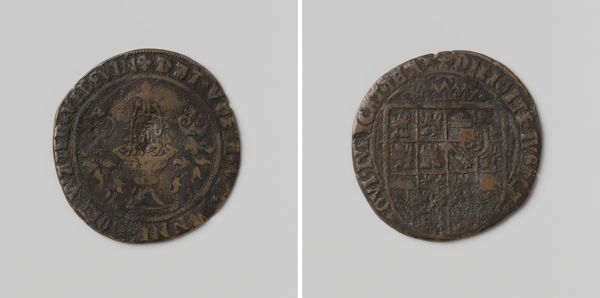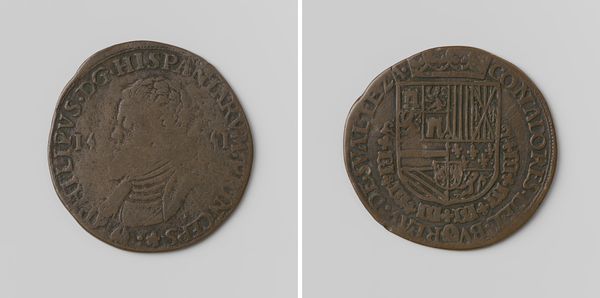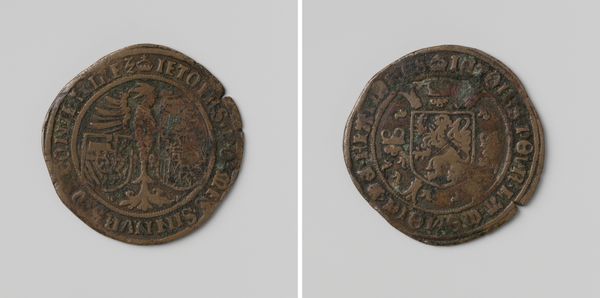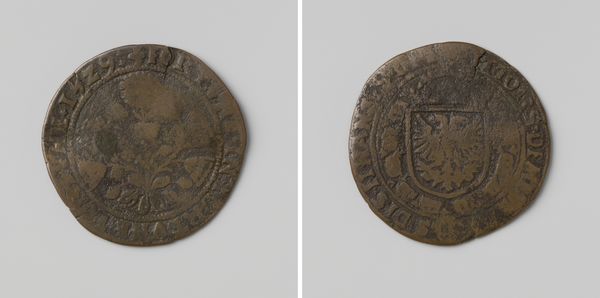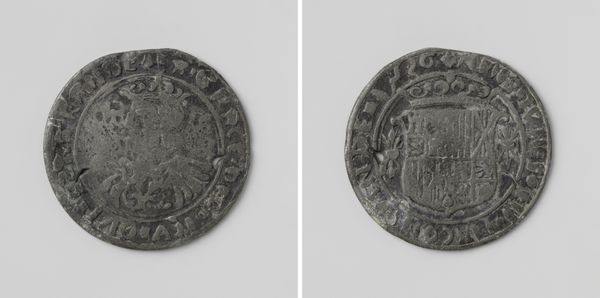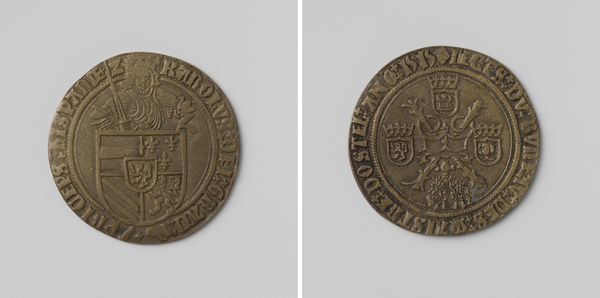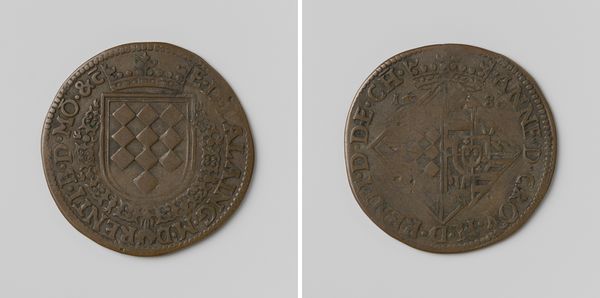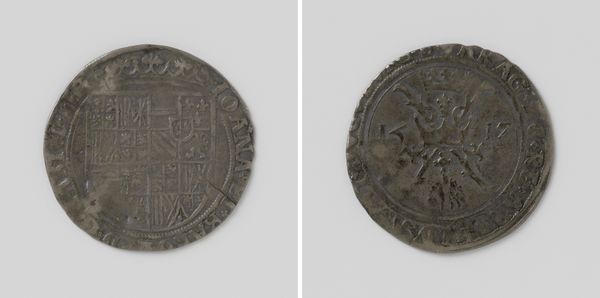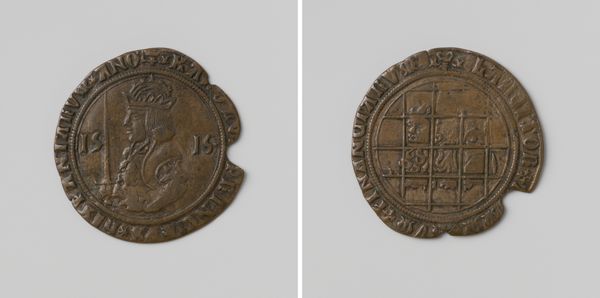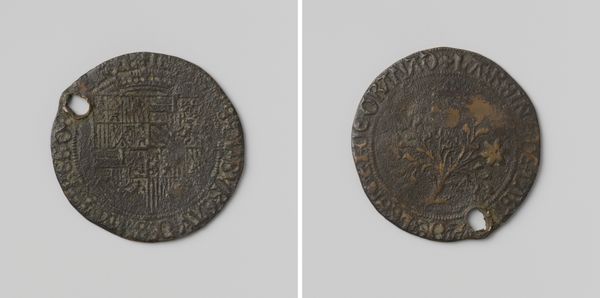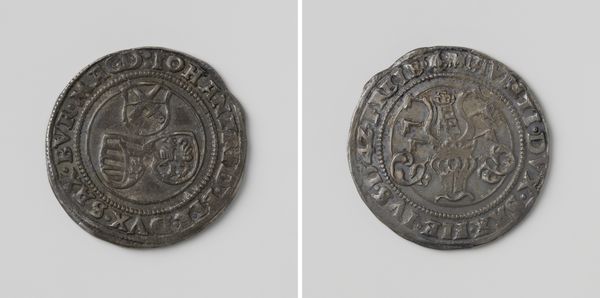
Filips de Schone en Ferdinand II, koning van Aragon, heersers over Leon en Castilie 1504 - 1506
0:00
0:00
print, metal, relief, engraving
#
portrait
#
medieval
# print
#
metal
#
relief
#
ceramic
#
engraving
Dimensions: diameter 2.9 cm, weight 3.25 gr
Copyright: Rijks Museum: Open Domain
Editor: So, this engraving on metal, dating from around 1504-1506, depicts Filips de Schone and Ferdinand II. It's fascinating how such small objects carry so much historical weight. What narratives do you see embedded within this coin? Curator: This coin isn’t merely a currency; it's a declaration of power, a visual representation of dynastic ambitions and, perhaps, anxieties. Notice the juxtaposition of Filips and Ferdinand. This isn’t just about two rulers; it's about the merging—or collision—of their respective legacies: the Habsburg and Aragonese lines. How do their visages, or the symbols around them, reinforce or challenge existing power dynamics? Editor: I see... So, the imagery is intentionally loaded. Is it arguing something about legitimacy, or...? Curator: Precisely! Coins often acted as propaganda. Think about the specific choices: What imagery is emphasized? What's downplayed? We have the symbols of power, the inscriptions circling the figures. Each detail contributes to a constructed narrative intended to shape public perception of their rule, both domestically and in relation to other European powers. Editor: It feels like I need a decoder ring to understand all the visual cues here. I would imagine the selection of imagery would also play differently depending on your perspective and how your own community positioned within their political goals. Curator: Absolutely. To whom was this message intended to resonate, and what would those viewers bring to their interpretation of this iconography based on gender, class, or regional identity? That interplay between the object and the observer shapes how we understand it even now. It reminds us that history isn't just about the past; it’s an ongoing conversation. Editor: I'm starting to appreciate how even seemingly simple objects like coins can offer complex insights into the socio-political landscape of the time. Curator: Indeed, and by interrogating these objects through the lenses of power, identity, and representation, we can unearth valuable perspectives on the complexities of history.
Comments
No comments
Be the first to comment and join the conversation on the ultimate creative platform.
